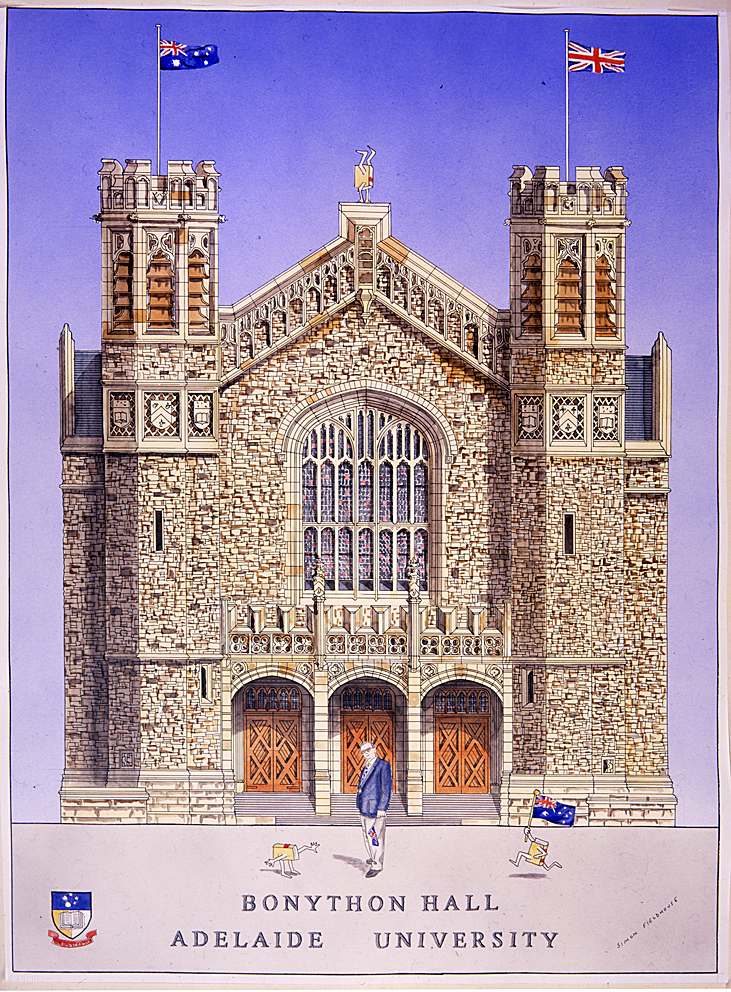
Bonython Hall Adelaide University
Bonython Hall: A Beacon of Knowledge and Tradition at Adelaide University
Adelaide University's Bonython Hall stands as a testament to the rich history and intellectual tradition of this prestigious institution. With its imposing architecture and symbolic significance, Bonython Hall has been a central hub for academic and cultural events, fostering learning, innovation, and a strong sense of community.
Bonython Hall was officially opened in 1936 and was named in honor of Sir John Langdon Bonython, a prominent South Australian figure known for his dedication to the university and the state. Designed by architect Walter Hervey Bagot, the hall's neoclassical architecture is a striking presence on the North Terrace campus. Its grand columns, intricate stonework, and a soaring dome create an atmosphere of grandeur and reverence. The hall's aesthetic appeal is not limited to the exterior; the interior boasts a magnificent auditorium that can accommodate up to 1,500 people. The ornate woodwork, elegant chandeliers, and decorative details further enhance the sense of prestige associated with this iconic venue.
Bonython Hall's significance goes beyond its architectural beauty. It has played a pivotal role in fostering academic excellence, providing a space for graduation ceremonies and academic events. The hall has witnessed countless graduates walk across its stage, marking the culmination of years of hard work and dedication. These ceremonies are not just milestones for individuals but also celebrations of knowledge and the pursuit of wisdom, reaffirming Adelaide University's commitment to education.
Moreover, Bonython Hall serves as a cultural epicenter within the university. It has hosted numerous concerts, lectures, and exhibitions over the years, welcoming artists, intellectuals, and scholars from all over the world. These events enrich the intellectual and cultural landscape of the campus, offering students and the broader community opportunities to engage with a diverse array of topics and talents.
In addition to its academic and cultural significance, Bonython Hall holds a special place in the hearts of alumni and the local community. It is a symbol of the enduring traditions and values of Adelaide University. For many, returning to the hall brings back fond memories of their time as students, creating a sense of nostalgia and connection to their alma mater. The hall also plays a vital role in connecting the university with the broader community, acting as a bridge between academia and society.
In conclusion, Bonython Hall at Adelaide University is not merely a building; it is a symbol of knowledge, tradition, and the pursuit of excellence. Its grand architecture and historical significance make it an integral part of the university's identity. It serves as a venue for academic ceremonies and cultural events, bringing together people from various backgrounds to celebrate education and the arts. As Adelaide University continues to evolve and grow, Bonython Hall remains a steadfast beacon, reminding us of the enduring value of knowledge and tradition in our ever-changing world.
The exterior of Bonython Hall is characterized by grandeur and symmetry. The imposing structure is fronted by six colossal Ionic columns, each standing over 15 meters tall, which support a triangular pediment. These columns, with their intricate fluting and ornate capitals, are not only a testament to the skill of the architects and craftsmen but also harken back to the classical architecture of ancient Greece. Neoclassical design, popular during the early 20th century when the hall was built, was influenced by the Greek and Roman architectural styles, symbolizing intellectual ideals and cultural refinement.
The facade of Bonython Hall is adorned with decorative stonework, including elaborate friezes and intricate carvings that depict various academic and cultural motifs. These elements add a layer of sophistication and meaning to the building's appearance, emphasizing the importance of education and the arts.
The most prominent feature of Bonython Hall's architecture is its magnificent dome. Rising above the central auditorium, the dome is a testament to the architectural prowess of Walter Hervey Bagot. It features a striking oculus, a circular opening at the top, which allows natural light to flood the interior, creating a sense of grandeur and brightness within the hall. The dome's prominence in the design is not only a testament to the architectural style but also serves a practical purpose in illuminating the space without the need for excessive artificial lighting.
Inside the hall, the neoclassical elements continue to impress. The grandeur of the exterior is mirrored in the interior with towering columns, decorative plasterwork, and an opulent color scheme. The woodwork, including the stage and gallery balustrades, is ornately carved with intricate details, adding to the sense of sophistication and academic dignity. The elegant chandeliers that hang from the dome complete the overall ambiance, creating an atmosphere of reverence and significance.
Bonython Hall's architecture, combining classical influences with modern functionality, makes it not just a building but a work of art in its own right. Its design reflects the values of knowledge, tradition, and cultural refinement that Adelaide University upholds. As a symbol of academic and cultural excellence, Bonython Hall's architecture serves as a testament to the enduring legacy of the university and its commitment to intellectual pursuits.